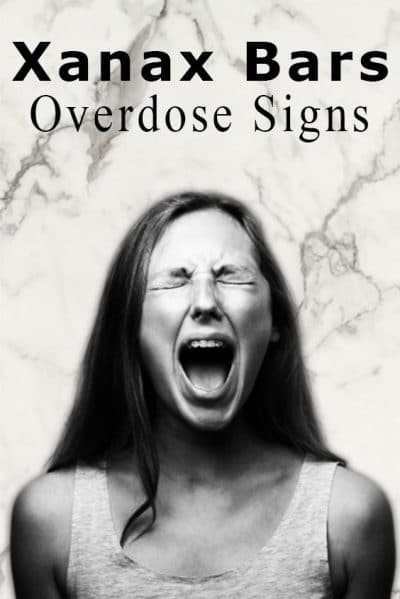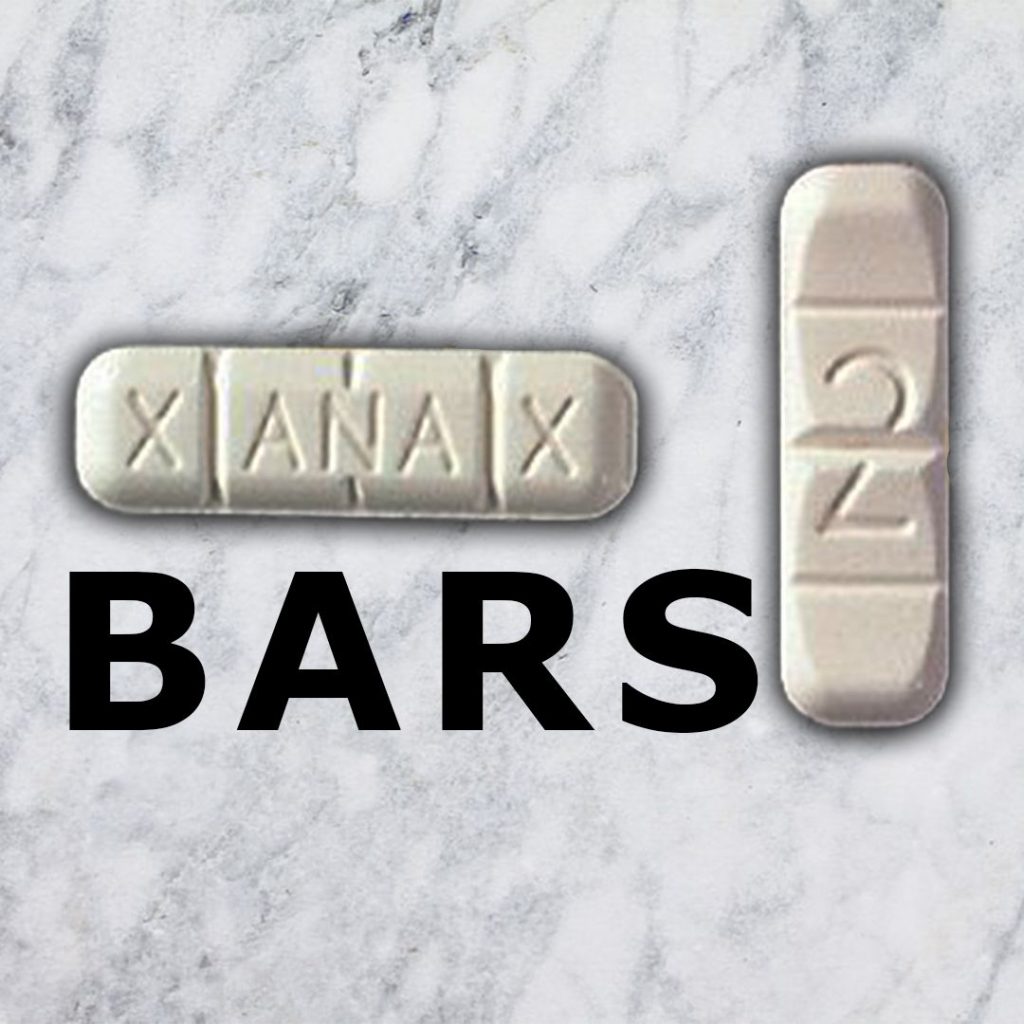
Xanax, otherwise known as Alprazolam, are rectangular shaped Xanax tablets that can be broken down into four separate pieces or taken as a whole pill. Xanax Bars is a common slang term used by people that typically buy Xanax illegally. Each Xanax bar has 2-milligrams per dose, and when broken into smaller pieces they can become 1mg or 0.5mg doses. Xanax bars have more recently become subject to many cultural references which is causing a rise in their use among the younger demographic.
Addiction and overdoses related to Xanax bar abuse is becoming more common. These bars are extremely dangerous when abused or not taken as prescribed. Many people who become dependent on taking Xanax bars and try to stop on their own will experience extremely painful withdrawal symptoms. While you may want to try and quit cold-turkey or detox on your own, there can be severe medical complications which can result in death. We recommend reaching out to a trusted Xanax abuse treatment center for the safest and most comfortable recovery.
What is Xanax(Alprazolam)?
Xanax is in the category of Benzodiazepines (Benzo). Xanax can be extremely habit forming and many users become dependent on taking it. It is an antidepressant and anti-anxiety medication developed in the late 1960s. It was originally created to be a superior sleep aid however its effectiveness for dealing with anxiety, panic and mood disorders led to more research before finally marketing it as such .If you find yourself addicted to Xanax bars or know someone who is showing the signs associated with Xanax abuse, you should seek out proper medical attention from experienced professionals for Xanax abuse treatment. Treatment for Xanax bars addiction is similar to other types of Benzodiazepine addictions. The treatment phases for Xanax bar addiction typically begins with a medically supervised Xanax detox, then residential treatment, and Intensive Outpatient therapy.
Cultural References about Xanax Bars
Xanax bars have become a cultural reference point in a subgenre of music labelled as “SoundCloud Rap”. “Popping a Xan” has become the choice lyrics for such rappers as Lil Xan, Lil Uzi Vert, and Lil Peep. As younger millennials and Gen Z-ers are susceptible to cultural influences like this, it has caused a rise in Xanax abuse. Other common nicknames for Xanax bars include:
- Zannies or Xannies
- Xanbars or Zanbars
- Handlebars, Bars, Z-bars, Totem Poles (Referencing the bar shape of a full Xanax bar)
- Blue Footballs
- And Benzos (short for Benzodiazepines, the class of drugs Xanax belongs to)
Xanax Bar Abuse in Other Age Groups
Aside from the aforementioned millennials and Gen-Z demographic, Xanax bar abuse is common in other age demographics as well. The National Institute of Health reports that patients who are prescribed Benzodiazepines such as Xanax bars may not be aware of the risks of use. In Psych Health Roanoke’s report, they share that approximately 83 percent of adults over age 65 take a prescription drug and approximately 30 percent take eight or more prescriptions per day. With this being the case, it is not uncommon to see someone over the age of 65 become addicted to Xanax bars or other medications. You may have become dependent on taking Xanax bars and you may not even know it! If you have any questions about your use of your Xanax bars, or are worried that you or a loved one may have become dependent on taking them, please call us ASAP.
The Dangers of Being Addicted to Xanax Bars
Being addicted to Xanax bars can cause a lot of emotional and physical issues. Like all substance abuse addictions, you are at a high risk of not only overdosing, but losing everything you have! A Xanax bar addiction can completely consume your life. It can lead to illegal behavior to support the habit, Isolation and emotional distancing from friends, family, and interests, and remove all of the positive progress you have made in your life. Other Xanax bar addiction dangers can include:

- Slurred Speech
- Frequent Confusion and Grogginess
- Increased Depression or Anxiety
- Motor Impairment
- Stealing Other’s medications or money to support the habit
- Overdose and Severe Withdrawal Symptoms
Signs a loved One Is Abusing Xanax Bars
We don’t want to alarm you if a loved one is abusing Xanax bars. The first step you can take is to call a trusted drug and alcohol treatment center like us to better understand your loved ones exact situation. It’s important that they are safe and if a problem does exist, the willingness to get help. Depending on the frequency of use and how long your loved one has been abusing Xanax bars, the signs may vary. Typical signs of Xanax abuse include but are not limited to:
- Not taking them as directed
- Saving up pills to take more pills later at the same time.
- Using more than the prescribed dosage
- Seeking prescriptions online
- Seeking prescriptions from multiple doctors.
- Stealing other people’s Xanax
- Stealing money to support Illegally buying Xanax
- Frequent drowsiness
- Trying to quit or taper and not being able to
Xanax Bars Overdose Signs And Symptoms

It’s a scary thing to witness or experience an overdose. An overdose on Xanax bars can be deadly. If you have personally taken more than prescribed and think you are overdosing or have witnessed someone doing so, call 911 for medical assistance right now. It can save their life. A Xanax overdose can vary from person to person depending on their height, weight, age, and if taken alongside other drugs, especially opioids and alcohol. Xanax can be fatal when combined with Alcohol or opioids. A Xanax bar overdose is similar to over Benzodiazepine overdoses. Common Xanax overdose signs can include:
- Excessive Drowsiness
- Confusion
- Severely Impaired Coordination or Reduced Reflexes
- Coma
- Death
Xanax Bars Detox and Withdrawal Timeline
The first step for recovering from an addiction to Xanax bars is by reaching out for help. After assessing your unique situation and being accepted into the facility, you will begin a detox phase. While detoxing from any drugs, especially Xanax bars can be a painful and difficult process, when you are overseen in a medical facility you will be as safe and comfortable as possible. Trying to quit on your own is not recommended and can lead to painful medical complications and death. The typical timeline for Xanax detox and withdrawal symptoms is as follows:
6-12 Hours – Most users begin to experience withdrawal symptoms after the first 6 hours when using short-acting benzodiazepines. These typically include cravings, anxiety, and insomnia, which will appear and continue to worsen over the duration of the detox period. For longer-acting benzodiazepines, these symptoms may not appear for up to 4-5 days after the final dose.
1-5 Days – Patients experience profuse sweating, panic, and anxiety, may experience nausea and headaches. Another major challenge in Benzo detox is how to deal with insomnia. Most people are irritable during the detox process, have significant mood swings, and may be violent. Some patients are at risk of seizures and psychosis or hallucinations. These symptoms typically peak after the first 4-5 days
5-15 Days – Withdrawal symptoms typically plateau and then begin to taper off, typically lasting for at least 2 weeks for most patients. Longer-acting benzos will begin to peak at this time, with a plateau about 3-4 weeks from the final dose.
Post-Acute Withdrawal Symptoms (PAWS) – Post-Acute-Withdrawal Syndrome or PAWS is a protracted form of benzodiazepine withdrawal, where symptoms last up to months after the final dose. PAWS occurs most frequently in users with a long history of drug use, especially those who are very heavily dependent and taking large doses. PAWS can occur several months after quitting, creating strong and lengthy withdrawal symptoms.
Rebound – Benzodiazepines are commonly prescribed to treat general anxiety disorder, panic disorder, and insomnia. Those quitting the drug may feel rebound disorder during the first 2-3 days of detox, during which time anxiety and insomnia may come back more strongly than before.
Residential Treatment For Xanax Addiction
After successfully completing a detox program for Xanax bars, a residential inpatient program is typically advised. This is the next step towards your lasting recovery. Your time in residential treatment can completely transform your life for the better if you are open and willing. A residential treatment program for Xanax addiction will provide you with a private or semi-private room, healthy home cooked meals, individual and group therapy sessions, dual diagnosis treatment if necessary, counseling, medical support, life skills training, and surround you with a group of like minded individuals to support you. Our residential treatment program has been helping individuals recover for more than 50 years, and we are here and ready for you.
Getting Help For Xanax Bar Addiction
Deciding you need help for Xanax bar addiction is an amazing step. Don’t let this moment of clarity pass you buy. You can get help as easily as live chatting or calling one of our addiction specialists. They are standing by 24/7 to help. After assessing your unique situation, you will be guided through a process of how to get into the program. Recovery from Xanax addiction is not only possible, it is very likely, if you dedicate the time to working the program. We are so confident that you will recover from Xanax addiction with us that we have a 90-day pledge. The help doesn’t stop after you finish the program either. We have weekly alumni meetings and events as well as a thriving online community of people in recovery helping one another every day. You too can recover by contacting us today.


